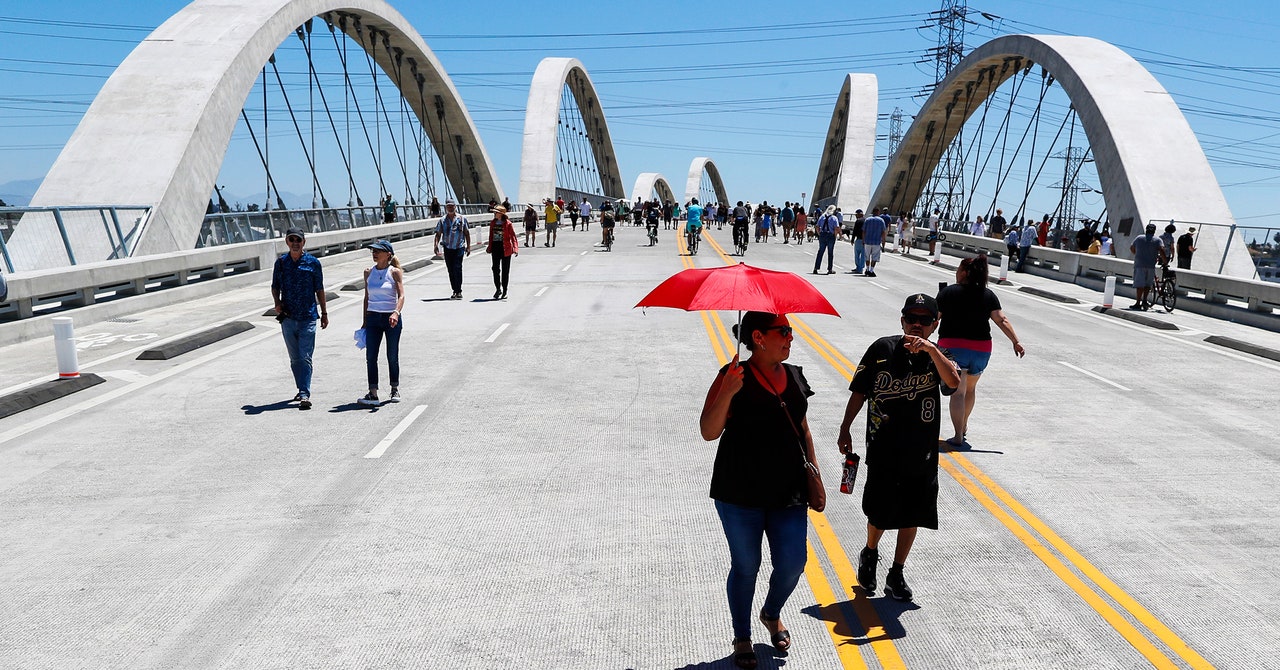When a California pollution regulator voted last month to pass a rule banning the sale of new gas-powered cars in the state by 2035, its officials have been hailed as climate heroes. With good reason, too: The move will cut emissions by nearly 400 million tons between 2026 and 2040, the state calculates, preventing an estimated 1,300 deaths from heart and lung-related diseases. The ban is the first such move in the US and one of the most aggressive climate regulations in the world. It underlines the Golden State’s position as a powerful testing ground for environmental policy. What’s more, an auto industry already excited about electrification seems to have the whole thing on track. Experts say the target should also be well within reach; after all, more than 16 percent of new cars sold in California this year were zero-emissions.
That’s the good news. Here’s the bad news: California still has a lot of work to do as electric cars alone won’t be enough to avert the worst of climate change. In a draft report released this summer, the state’s Air Resources Board focused on another policy needed besides banning gas cars: reducing the mileage Californians drive each year. “Even with improvements in clean vehicle technology and fuels,” the agency wrote, “there is still a need to reduce driving to meet state commitments on climate and air quality.”
The state has promised to drive less because, for example, it will take a while for all California cars go zero emissions Despite new purchases and old car scraps, the average age of cars on American roads continues to rise – today the average is more than 12 years. Existing gas-powered cars will last long after being banned from new car lots. Plus, there are plenty of emissions associated with cars and driving that don’t come from an exhaust, including the production of the vehicle in the first place, and the things cars run on. Building and maintaining just one lane-mile of highway produces about 3,500 tons of CO2 emissions, according to one analysis.
Despite its goal, California has so far failed to significantly reduce driving. In 2019, the latest year with strong data, Californians drove more cars, measured by annual vehicle miles traveled per person, than 14 years earlier. They were carpooling, cycling and walking to work less. And fewer people took the bus or train, a pattern that has worsened since the start of the pandemic. By 2035, the state wants to reduce the number of miles the average Californian travels per vehicle by 19 percent compared to 2005. But preliminary data suggests that number had gone in the opposite direction by 2019. (In public comments, a number of regional agencies have argued that they have reduced mileage more than the Air Resources Board calculates in its draft report.)
The rest of the US should also drive less. An analysis by the Rocky Mountain Institute, a sustainability research organization, estimates that by 2030, the US will need to reduce the number of miles it travels by car by 20 percent to limit global warming to 1.5 degrees. Celsius. Beyond that, the experience of life on Earth is likely to get much worse.
Unfortunately, the slowness of a century of urban planning in the US has made it very difficult to live in many places without driving. “We’re trying to get people to drive less, but for a lot of people, that’s just not quite possible,” said Susan Handy, a professor of environmental science and policy at UC Davis. “What we need to do is rebuild and adapt our communities so that it becomes just possible to drive less,” she says.

